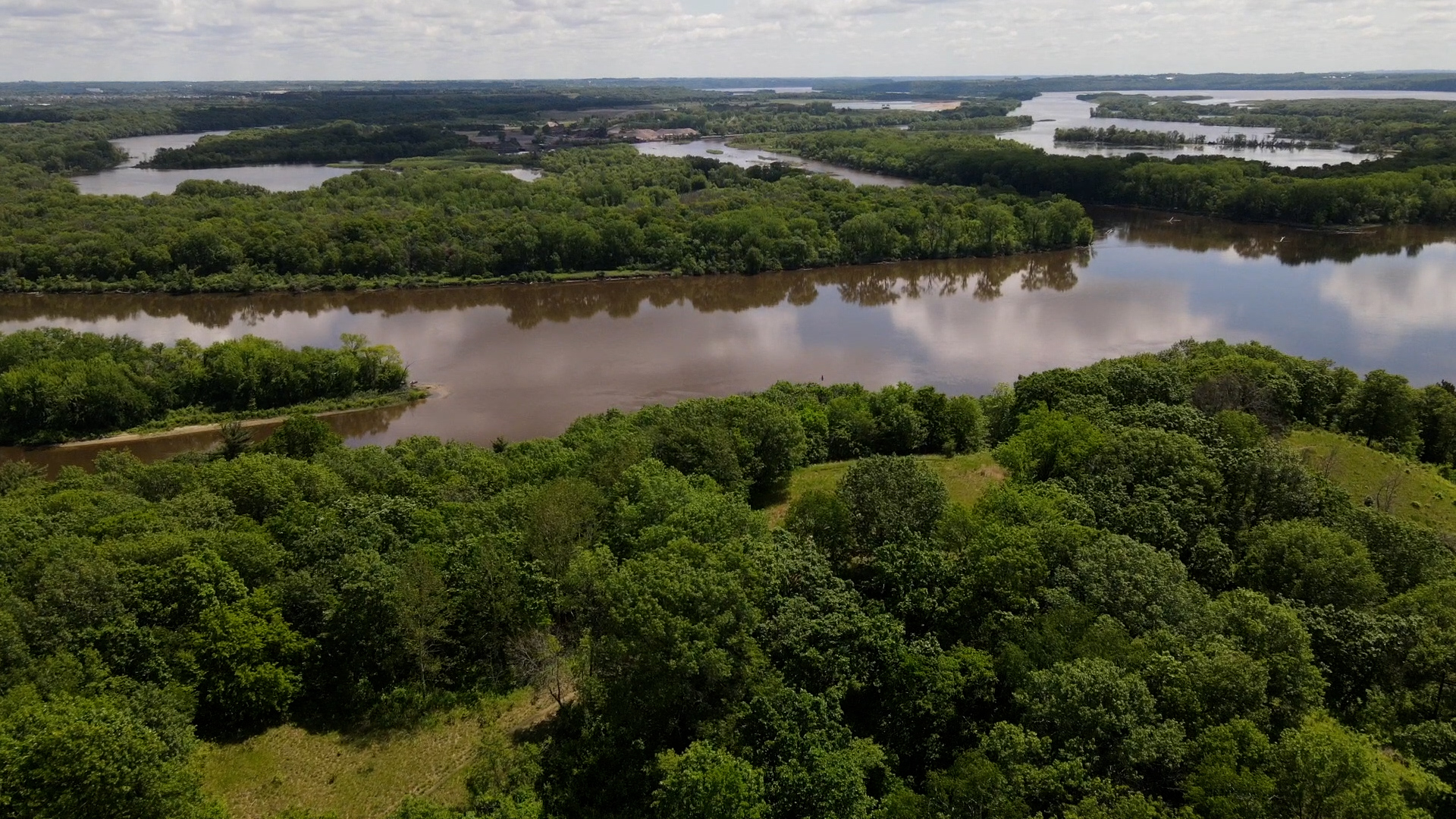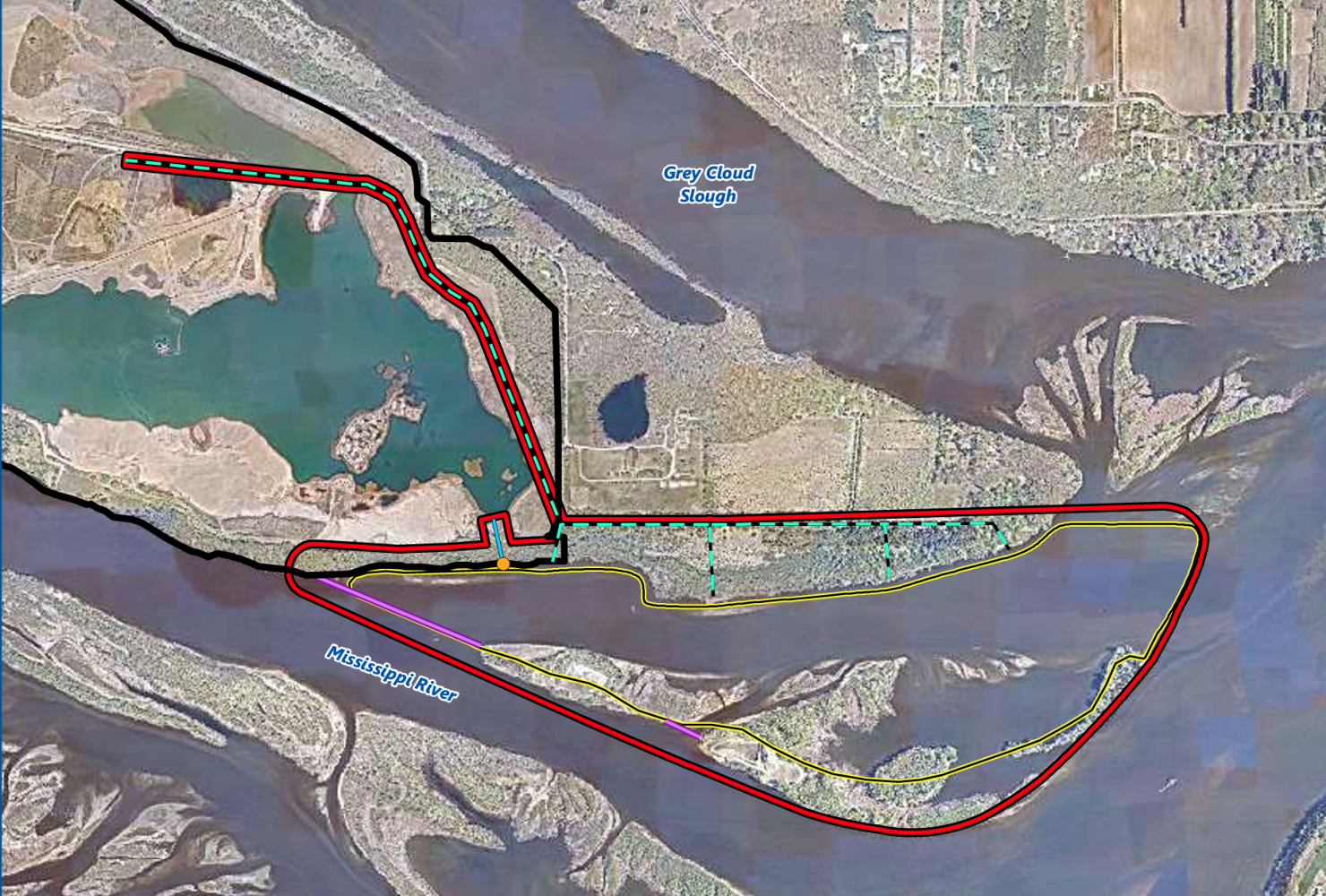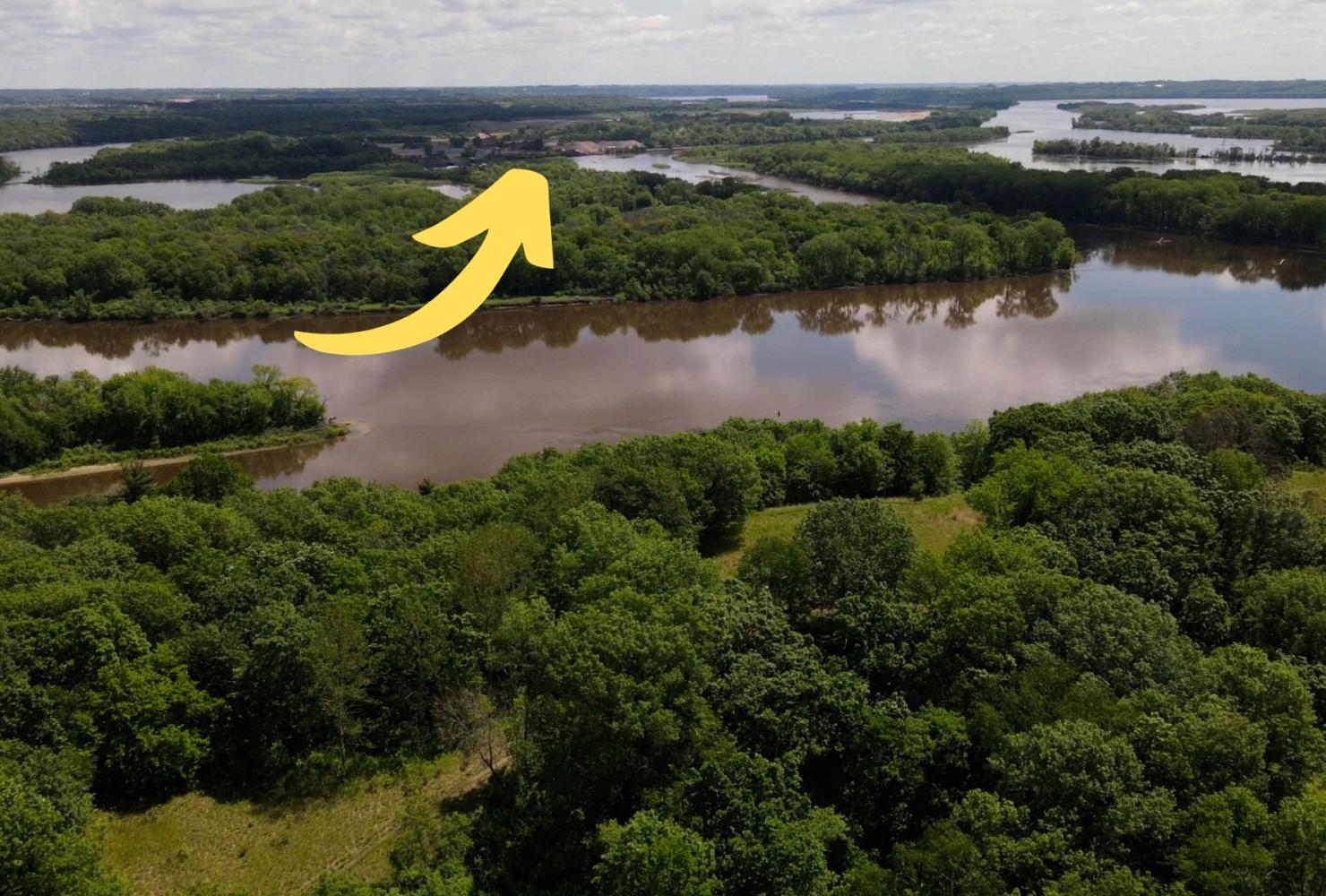Is the proposed riverbed mine in Cottage Grove legal?

Holcim Industries wants to expand its existing sand and gravel mine into the Mississippi River in Cottage Grove. (Photo by Mike Durenberger for FMR)
A proposed mine in — yes, in — the Mississippi River backwaters near Grey Cloud Island in Cottage Grove could face quite a few hurdles.
Holcim Industries proposed to dig a 200-foot deep mine pit in the riverbed to extract aggregate — sand and gravel. (Read more about the proposed mine.) Last month, the city of Cottage Grove accepted public comments on the draft Environmental Impact Statement for this project.
While we haven't seen all of the comments yet (they will be public soon), letters from Friends of the Mississippi River, other advocates, and state and federal agencies are in agreement: This proposal has serious legal shortcomings.
Here's an overview of those potential legal issues, what the city will do next and when there will be more opportunities for community input.
Legal issues abound
The entire premise of Cottage Grove's draft Environmental Impact Statement (EIS) may be legally flawed. These statements are built around a "project purpose and need," which defines the goal of the project and various alternative ways to meet that goal. The environmental impacts of those various alternatives are then assessed, with the goal of selecting the least environmentally damaging alternative that can fulfill the project's purpose.
Holcim's proposal has a very narrow purpose: to extend the life of its existing mine site, barge network and distribution systems, and to do so at the lowest cost to the company. This narrow purpose eliminates any alternative that isn't in this backwater area and prioritizes one company's profits over the public interest in a clean and healthy Mississippi River. That in itself is legally questionable.
The Twin Cities does need continued supply of aggregate material for construction projects — but there is more than one way to meet that need. A riverbed mine might be the best option for this multinational company's bottom line, but it's not the best solution for our community or the river and its many plants and animals. A broader project purpose would allow for a legitimate analysis of different sites' benefits and drawbacks.
Another legal question is whether mining is allowed in this location at all. The Grey Cloud Island area is part of the Mississippi River Corridor Critical Area, a state-designated area with special protections. FMR led the effort to establish strong state rules to protect this stretch of the river. One of those protections is a ban on new mining in shoreline areas. This ban is clearly written in the state rules as well as city ordinance.
The city asserts that because this project would expand an existing mine, it does not constitute "new" mining. However, the state rules are very clear that "new" mining includes expansions and relocations. The language is plain, and the city's interpretation is incorrect.
Agencies, including the Minnesota Department of Natural Resources, the U.S. Army Corps of Engineers, and the National Park Service, have also expressed concern that the mine's environmental impacts might be too severe. The proposed mine would destroy hundreds of acres of backwater wetlands that provide habitat for several threatened and endangered species. By state and federal law, such destruction should be avoided whenever possible. If it can't be avoided, Holcim must mitigate by investing in wetland habitat improvements elsewhere.
State and federal agencies have questioned whether there is any mitigation option that could fully compensate for the level of habitat damage this mine would cause. Without an approved mitigation plan, these authorities won't issue the required permits for the mine.
Many steps ahead
The EIS is only an advisory document to guide future decision-making about the project. It is not a permit or an approval document.
The city of Cottage Grove is responsible for deciding whether it is "adequate," i.e. that it meets the state's required level of thoroughness and accuracy. Given the abovementioned issues, we believe the draft needs substantial revisions to meet that bar. The city is reviewing comments now and may change the draft before voting on whether to approve it.
However, even if the city approves the EIS, Holcim can't begin mining immediately.
First, Holcim must obtain permits from the city, the Minnesota Department of Natural Resources, the U.S. Army Corps of Engineers and other agencies. Due to its severe environmental impacts, this project may not be able to meet all the permitting requirements.
Because Grey Cloud Island is important to Dakota people, we would also expect thorough consultation with tribal nations before any permits could be issued. As far as we know, the city and Holcim have done little in this regard.
How you can participate
Cottage Grove will host a public hearing when the city council votes on whether to approve the EIS as adequate. The vote will likely occur this spring after the city has reviewed and responded to all the submitted comments.
Community members will have an opportunity to speak at this meeting. We'll let our River Guardians in the Cottage Grove area know when it is scheduled.
If Holcim applies for permits, there may also be future comment opportunities with the permitting agencies, including the city, Minnesota Department of Natural Resources and Army Corps.
Become a River Guardian
Sign up and we'll email you when important river issues arise. We make it quick and easy to contact decision-makers. River Guardians are also invited to special social hours and other events about legislative and metro river corridor issues.

